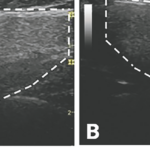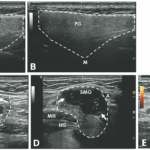 In primary Sjögren disease, autoreactive immune cells mainly target the exocrine glands, with symptoms of dry mouth and dry eye reducing the quality of life for patients with the condition. Lesions in the extra-glandular organs are also seen in patients with primary Sjögren disease. But it remains unclear why the condition only targets the exocrine glands.
In primary Sjögren disease, autoreactive immune cells mainly target the exocrine glands, with symptoms of dry mouth and dry eye reducing the quality of life for patients with the condition. Lesions in the extra-glandular organs are also seen in patients with primary Sjögren disease. But it remains unclear why the condition only targets the exocrine glands.
Other organs may communicate with target organ(s) to control the pathogenesis of primary Sjögren disease. Interorgan communication occurs during physiologic homeostasis and various diseases. Crosstalk between many organs via various mediators, such as hormones, cytokines, chemokines, neuropeptides or products from microorganisms, orchestrates several functions of the target organ by controlling molecular dynamics, cell signaling and gene expression. However, the precise cellular or molecular mechanism underlying the onset of autoimmunity via interorgan communication is still unknown.
In a recent study, Otsuka et al. hypothesized that the crosstalk between the target and non-target organs may influence the onset or development of autoimmune lesions in primary Sjögren disease. Using a mouse model, they sought to identify the molecules associated with interorgan communication between the target and other organs in primary Sjögren disease, analyzing the effects of interorgan communication on the cellular or molecular mechanism of autoimmunity. Additionally, they used integrative genomic, bioinformatic, pathologic and immunologic analyses to assess samples from patients with primary Sjögren disease.
The Results
Fibrinogen-like protein-1 (FGL-1) was identified as a mediator of interorgan communication between the salivary glands and the liver in the model mice of primary Sjögren disease. The production of FGL-1 in the liver is induced by interleukin (IL) 6 from CD4+ T cells in these mice. The onset of autoimmune lesions in an FGI1-deficient, primary Sjögren disease-model mice was earlier than the onset in the wild type, primary Sjögren disease-model mice.
Additionally, the researchers found that FGL-1 produced in the liver regulates naïve and memory T cell homeostasis. Further, FGL-1 was significantly up-regulated in patients with primary Sjögren disease compared with healthy controls. The concentration of FGL-1 was related to the serum IL-6 levels in patients, highlighting its potential as a biomarker for understanding disease pathogenesis.
Conclusion
FGL-1 plays a key role in the onset of autoimmunity by suppressing T cell activation in primary Sjögren disease. These results may facilitate the development of novel diagnostic or therapeutic strategies targeting the interorgan communication for autoimmune diseases.
For complete details, including source material, refer to the full study.
Excerpted and adapted from:
Otsuka K, Ushio A, Nagao R, et al. Regulatory role of FGL-1 in interorgan communication by controlling T cell homeostasis during the onset of Sjögren disease. Arthritis Rheumatol. 2025 Nov;77(11):1573–1584.


